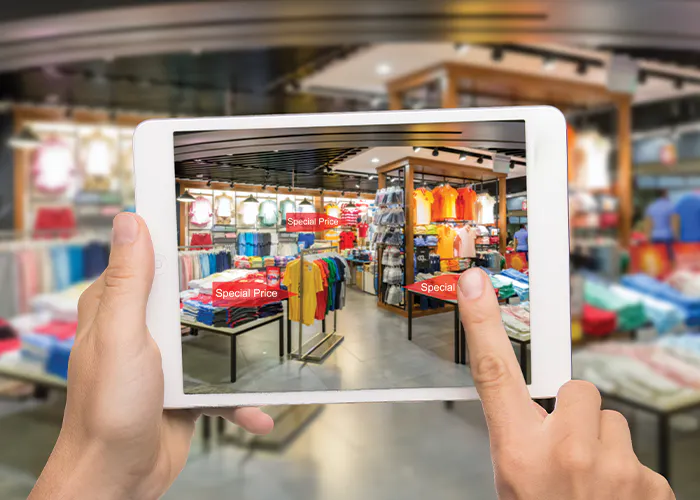
Augmented Reality Shopping provides consumers with unique new ways of engaging with products and services. Be it for entertainment purposes, education or engaging with brands – AR offers unique value to both consumers and retailers alike.
Retailers and brands that provide AR experiences often experience reduced product returns – this is particularly evident for items that can be difficult to evaluate or test out like shoes, eyewear and furniture.
Educate
Brands can use AR to help customers better comprehend and interact with product features, be it at point-of-sale or digital marketing campaigns. For instance, when purchasing glasses online from an ecommerce store they may use AR to preview how the glasses will look on them before making their selection – giving the illusion of being physically present instead of simply experiencing virtual representations of it.
AR can also be used to demonstrate how products will look in customers’ homes, such as furniture or clothing items they plan on purchasing, such as earrings and necklaces from LoLoZem’s mobile app, which lets shoppers see exactly what will look good before making a decision to make their purchase. AR technology makes this possible and reduces return rates significantly while increasing customer loyalty.
Brands can utilize AR to help their customers visualize complex processes and mechanisms, from showing how a car engine operates to explaining medical procedures through interactive animations.
Entertain
Augmented reality may conjure images of social media filters like Snapchat’s dog filter or immersive games such as Pokemon Go; however, its use has rapidly evolved into an invaluable way for both offline and online shoppers to navigate a complex retail landscape.
Augmented reality shopping experiences include shoe and clothing try-ons, home furnishings virtual showrooms, and 3D furniture design tools that allow consumers to view products before making a purchase decision. Augmented reality technology also helps consumers reduce uncertainty by helping them visualize how products will look on themselves, their home environments, or in their car before making decisions about purchases.
Studies using an AR feature on a cosmetics retailer’s mobile app demonstrated a 20 percent increase in sales of lesser-known brands, more expensive items, and new categories; especially among customers new to either app or category.
Engage
Augmented reality shopping experiences can be enhanced through AR by inviting customers to engage in games or challenges that unlock discounts, rewards, or exclusive products – increasing engagement, loyalty, and sales conversion rates.
AR can even the playing field for lesser-known brands. Ikea’s Place app, for instance, allows shoppers to preview how furniture or household items will look in their home before making a purchase decision – helping customers feel confident in their purchases while simultaneously decreasing return rates and waste production rates.
The COVID-19 pandemic has increased customer demand for more efficient shopping experiences in-store. Augmented Reality can reduce search times by making products easy to locate quickly, as well as providing information about pricing and sales. Retailers such as Lowe’s and Walgreens are using AR to guide shoppers through their stores more quickly while simultaneously increasing conversion rates by providing information that is most important to their customers.
Convert
Augmented reality technology offers retailers numerous strategic benefits that will keep their brand ahead of competitors. From interactive 3D models on ecommerce websites to virtual product try-on sessions, augmented reality is being leveraged by retailers to turn visitors into customers and ultimately boost profits.
AR shopping can also help ecommerce stores address high return rates – an ongoing challenge. By giving consumers the ability to see how products will look in their home or on themselves before making a purchase decision, brands can prevent many unsuitable items from returning back into warehouses.
AR shopping’s benefits are particularly pronounced for less-than-popular or expensive products, typically targeting a narrower niche market and known as the “long tail.” AR can help customers experience these products without fear of making riskier online purchases; ultimately spurring demand for niche or premium offerings and increasing revenue streams.








